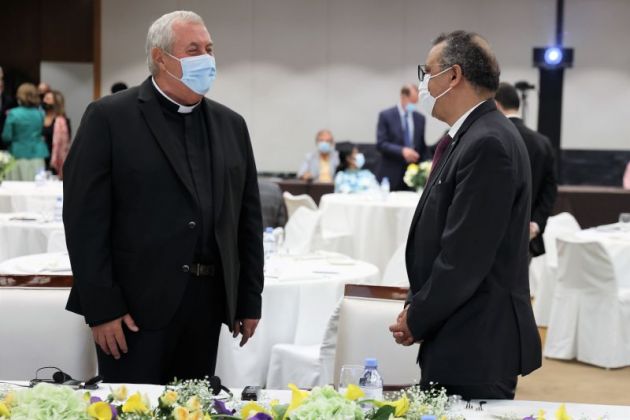Americans' post-COVID return to church flatlines: Survey

COVID-19 has shown a general decline in recent U.S. cases and churches and other houses of worship increasingly are holding services the way they did before the outbreak began to emerge in early 2020.
A Pew Research Center survey said, however, there has not been a corresponding rise over the past six months in the share of Americans who are attending in-person services.
While people steadily returned to church services in the first half of 2021, the trend hit a plateau.
In the third year since COVID-19 arrived, congregations and their leaders find that the people who worshiped alongside them before may not be coming back.
Around two-thirds of people who usually attend church at least monthly said they were back in the pews in March (67 percent), much the same as in September 2021 (64 percent.
Among U.S. adults who say they attend religious services; 43 percent now report that their house of worship is currently open and holding services the same way it did before the COVID-19 outbreak.
That is up 14 percentage points in the last six months and 31 points since last March.
MASK REQUIREMENTS
At the same time, 47 percent say their congregation is open but with modifications still in place due to the pandemic, such as mask requirements or social distancing.
Just 5 percent say their congregation is still completely closed to in-person worship, unchanged since September of last year (6 percent).
Pew said the overall share of U.S. worshippers who say their congregation is open to in-person services has not increased over the last six months, but fewer people say their services include coronavirus-related precautions.
The research organization said that the impact of the pandemic on U.S. religious service attendance remains difficult for two main reasons.
The ultimate course of the pandemic is still unclear.
An apparent plateau in religious service attendance could be followed by a rise if the pandemic gradually recedes, or by a drop if a new, highly infectious coronavirus variant emerges.
The second reason for uncertainty is that, before the pandemic, Pew Research Center surveys did not clearly distinguish between physical attendance at religious services and virtual attendance.
"2021 had many leaders clinging to the idea that the next season—Easter, the new school year, Christmas, etc.—would bring attendance back to 2019 levels. For most churches, that 'magic season' never materialized," wrote Carey Nieuwhof, former pastor and church leadership strategist, at the start of the year, Christianity Today reported.
"In 2022, the constant cycle of hope and disappointment will give way to the new reality that this is your church. It will become evident that some of the people who said they're coming back later clearly aren't coming back—ever."
